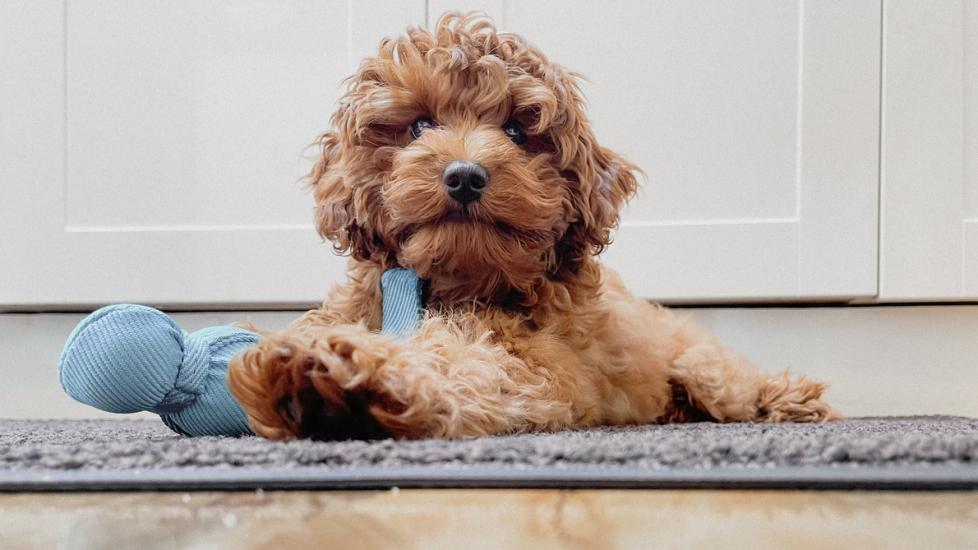Cavapoo
Equal parts cute, cuddly, and clever, the Cavapoo is a small (8–25 pound) crossbreed between the Cavalier King Charles Spaniel and a Miniature Poodle or Toy Poodle. Cavapoos have a friendly, playful nature and tend to go with the flow when they get plenty of love and attention from their people. This makes them a good pick for many families, including first-time pet parents.
Thanks to their Poodle parentage, the Cavapoo’s coat tends to be low-shedding, which can make them an excellent option for people with allergies—if they’re willing to take on the responsibility of consistent grooming, that is.
Caring for a Cavapoo
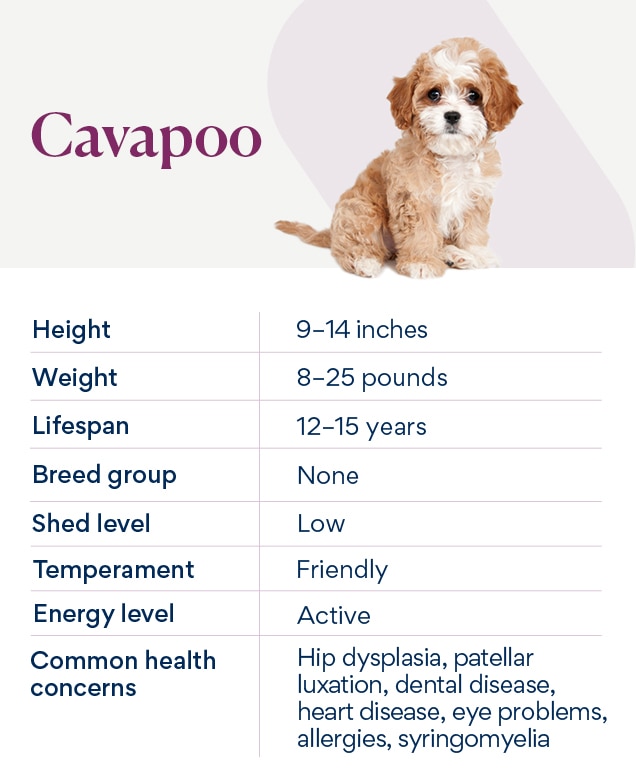
If you’re looking for a sociable, adaptable, utterly adorable little friend, the Cavapoo may be perfect for you. Erin Askeland, CPDT-KA, CBCC-KA, and Camp Bow Wow's animal health and behavior consultant, describes the hybrid as gentle and even-keeled.
“They aren’t lazy, but they are definitely one of the more low-key Poodle mixes because Cavs are so gentle; they really get along with anyone, including people and animals,” Askeland says. “They can be really good for a first-time dog parent because they’re usually not too much for someone to handle.”
Askeland adds that Cavapoos generally do well with children who know how to play gently with dogs; are comfortable in homes from tiny apartments to big houses with yards; and don’t require vigorous exercise. If you’re looking for a buddy to join you on long runs, another breed would be a better fit.
Cavapoo puppies and adults require regular grooming to keep their coats from becoming unruly. And because they love being with their people so much, separation anxiety can be an issue if not addressed early on.
Cavapoo Health Issues
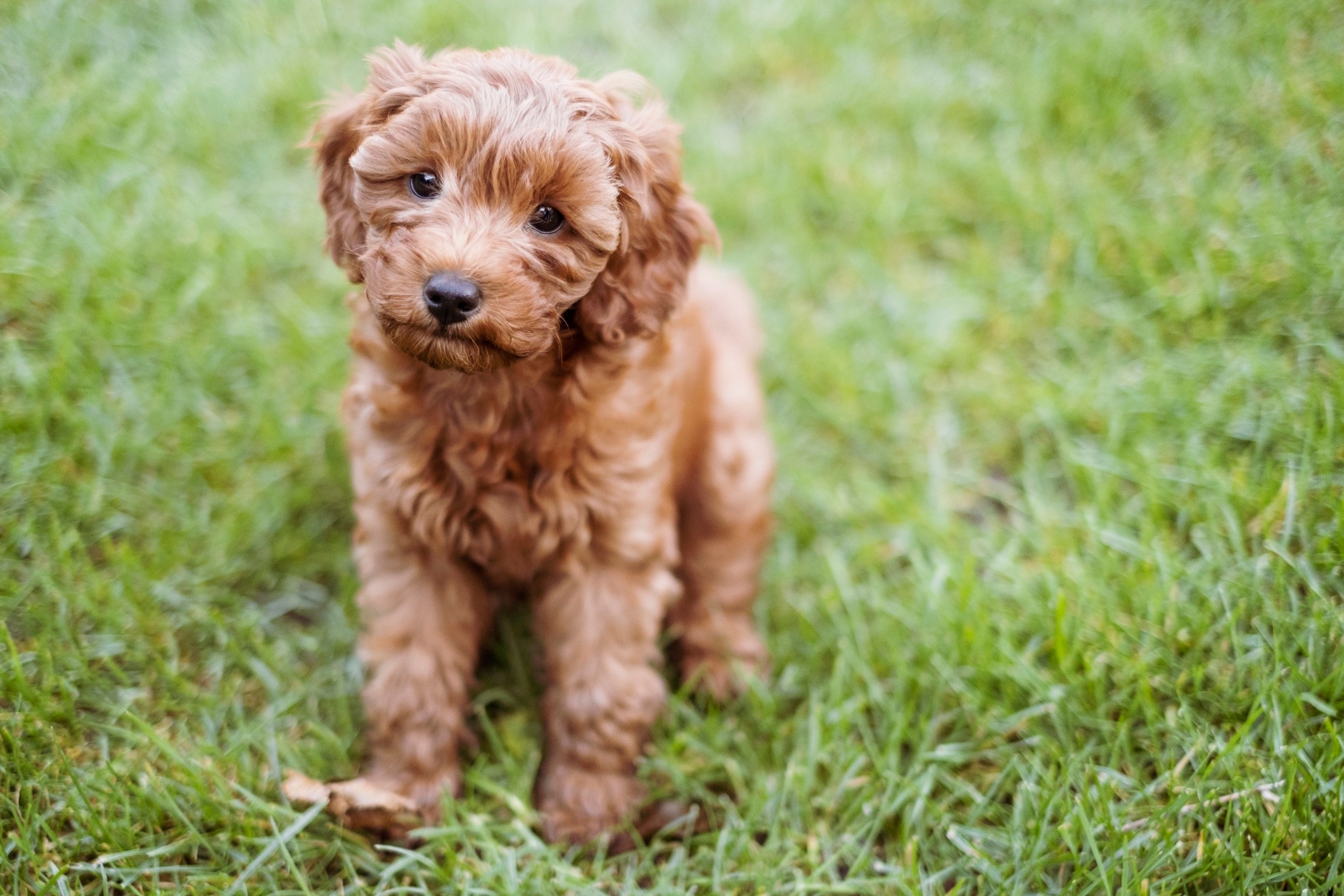
Cavapoos tend to be a healthy breed, with a typical lifespan of 12–15 years. But that doesn’t mean they’re free from health concerns.
“While it's true that hybrid dogs can sometimes have fewer health issues than their purebred parents, it's not a guarantee,” says Sabrina Kong, DVM, veterinarian at the Jules Veterinary Center in Northern California and a veterinary contributor at We Love Doodles. “In fact, hybrid dogs can still be prone to certain health issues that are common in both parent breeds, so it's crucial for pet parents to research the health issues that are common in both parent breeds before deciding on a hybrid dog breed.”
Hip Dysplasia
Hip dysplasia occurs in dogs when their hip joint doesn’t develop properly, leading to a loose joint that can then progress to arthritis, muscle atrophy, and limited mobility. Although this is more common in large dog breeds, hip dysplasia can be a problem in both Cavapoo parent breeds, so watch for signs of joint pain or reduced mobility. Your vet can advise you on whether joint supplements or pain medication may be helpful.
Patellar Luxation
In many small dogs, including the Cavapoo, patellar luxation can be an issue. This means their kneecap slides outside of its correct path, which causes pain and, eventually, arthritis. Joint supplements can help in mild cases, and anti-inflammatory medications are also commonly used in treatment. For severe cases, surgery may be required. If you notice your pet limping, bunny hopping, or skipping, tell your veterinarian.
Eye Conditions
Both parent breeds are prone to eye problems. Cavalier King Charles Spaniels can develop cherry eye, dry eye, retinal problems, and cataracts; Poodles can have issues with corneal dystrophy, progressive retinal atrophy, and eyelash problems. As a Cavalier-Poodle combo, eye health can be a concern for Cavapoo dogs.
If you notice any abnormalities of the eyes, including discharge, redness, or squinting, you should contact your veterinarian for an examination.
Syringomyelia
Cavalier King Charles Spaniels have a hereditary link to syringomyelia, or the development of fluid-filled cavities in the spinal cord. This condition is usually secondary to Chiari-like malformation, which is abnormal formation of one of the skull bones. While Kong says it’s not common, it is possible for Cavapoos to develop this because they have Cavalier roots.
Syringomyelia, or “neck scratcher’s disease,” causes neck or head pain. Symptoms can include signs of discomfort, posture changes, a wobbly gait (ataxia), or scratching or pawing at the area.
Your vet will rely on a physical exam, lab work, and diagnostic imaging to determine whether syringomyelia is the cause of your dog’s symptoms. If it is, they’ll talk to you about pain medications, whether surgery is an option, and if alternative treatments such as acupuncture could help. Some dogs live symptom-free for years, while others are severely impacted by pain.
Dental Problems
Like other small dogs, the Cavapoo is susceptible to dental disease, which not only causes bad breath, but can also lead to painful infection and even organ failure if left untreated. To help prevent this, bring your Cavapoo to the vet for regular checkups, have your veterinarian perform a dental cleaning when recommended, and practice good oral hygiene at home with toothbrushing. However, be aware that your pup may still need a tooth (or more) pulled at some point.
Heart Disease
Mitral valve disease (MVD) is an inherited condition and a leading cause of death for the Cavalier King Charles Spaniel, so it’s important that pet parents work with reputable breeders when searching for a Cavapoo puppy.
“Responsible breeders should provide proof of the parent's heart health,” Kong says. “To prevent heart disease from spreading through breeding lines, Cavalier King Charles Spaniels with heart murmurs or diagnosed MVD should not be used for breeding.”
Allergies
The symptoms of allergies in Cavapoos can manifest in several ways, Kong says. This includes:
-
Excessive itching and scratching
-
Licking or biting their skin
-
Red, inflamed skin
-
Hair loss
-
Gastrointestinal problems
-
Respiratory issues
Treatment will depend on the cause and may include:
-
Antihistamines, corticosteroids, or immunotherapy for environmental allergies
-
An elimination diet to pinpoint the problematic ingredient if the allergy is food-related
-
Ensuring effective flea-control measures for managing flea allergy dermatitis
Most allergies can be managed with appropriate medical treatment. “However, keep in mind that allergies may require lifelong management, and some dogs may be more prone to flare-ups or require ongoing medication,” Kong says. “Closely monitoring your Cavapoo for any signs of allergies and consulting your veterinarian promptly is the best way to go.”
What To Feed a Cavapoo
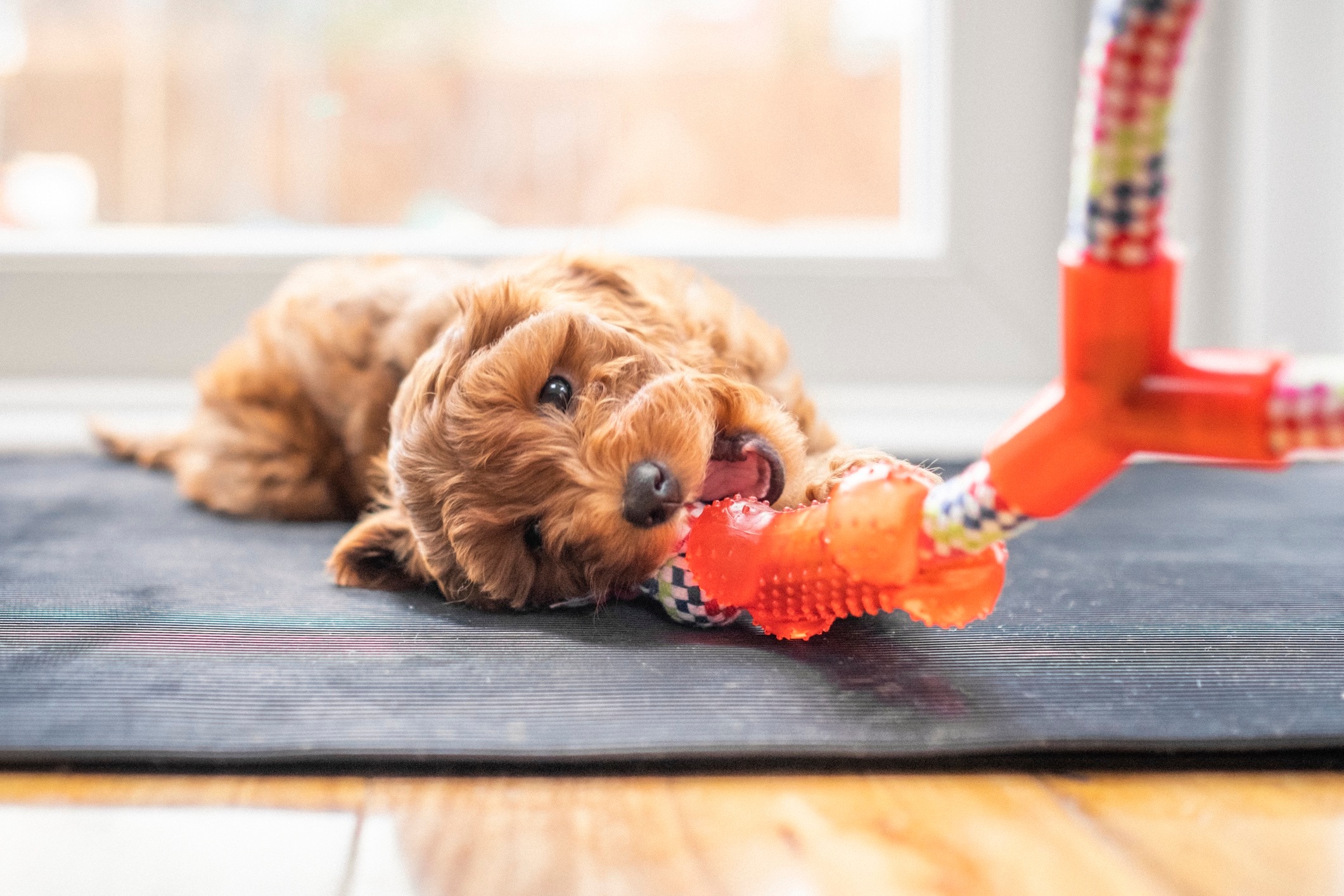
Choose a commercially available food with nutrients approved by the Association of American Feed Control Officials (AAFCO). However, if you notice changes in your Cavapoo’s skin, coat, waste, or behavior, a change of food may be in order.
“Some Cavapoos may have allergies or sensitivities to certain ingredients, so you need to always be aware and observe any reactions they may have so you can adjust their diet accordingly,” Kong says. Talk to your veterinarian if you suspect their food may be causing your pup’s problems. And remember It’s always best to consult with your dog’s veterinarian before making any dietary changes.
How To Feed a Cavapoo
Feed your Cavapoo a measured amount of a life stage-appropriate (puppy, adult, senior) food two to three times a day. Cavapoo puppies need three to four small meals daily on a consistent schedule, as this helps maintain blood sugar levels. Cavapoo adults can eat twice a day.
And remember: This is a small dog, so even a couple of treats every day can add to the calorie count!
How Much Should You Feed a Cavapoo?
The label on your pup’s dog food should provide a starting point for how much to feed your Cavapoo, based on his size. But chatting with your vet about other variables—like age, activity level, and current body composition—will help determine whether he could use a little more (or less) kibble.
Nutritional Tips for Cavapoos
Because the Cavapoo can suffer from hip dysplasia and patellar luxation, your vet may recommend food or treats with a joint supplement.
Behavior and Training Tips for Cavapoos
Cavapoo Personality and Temperament
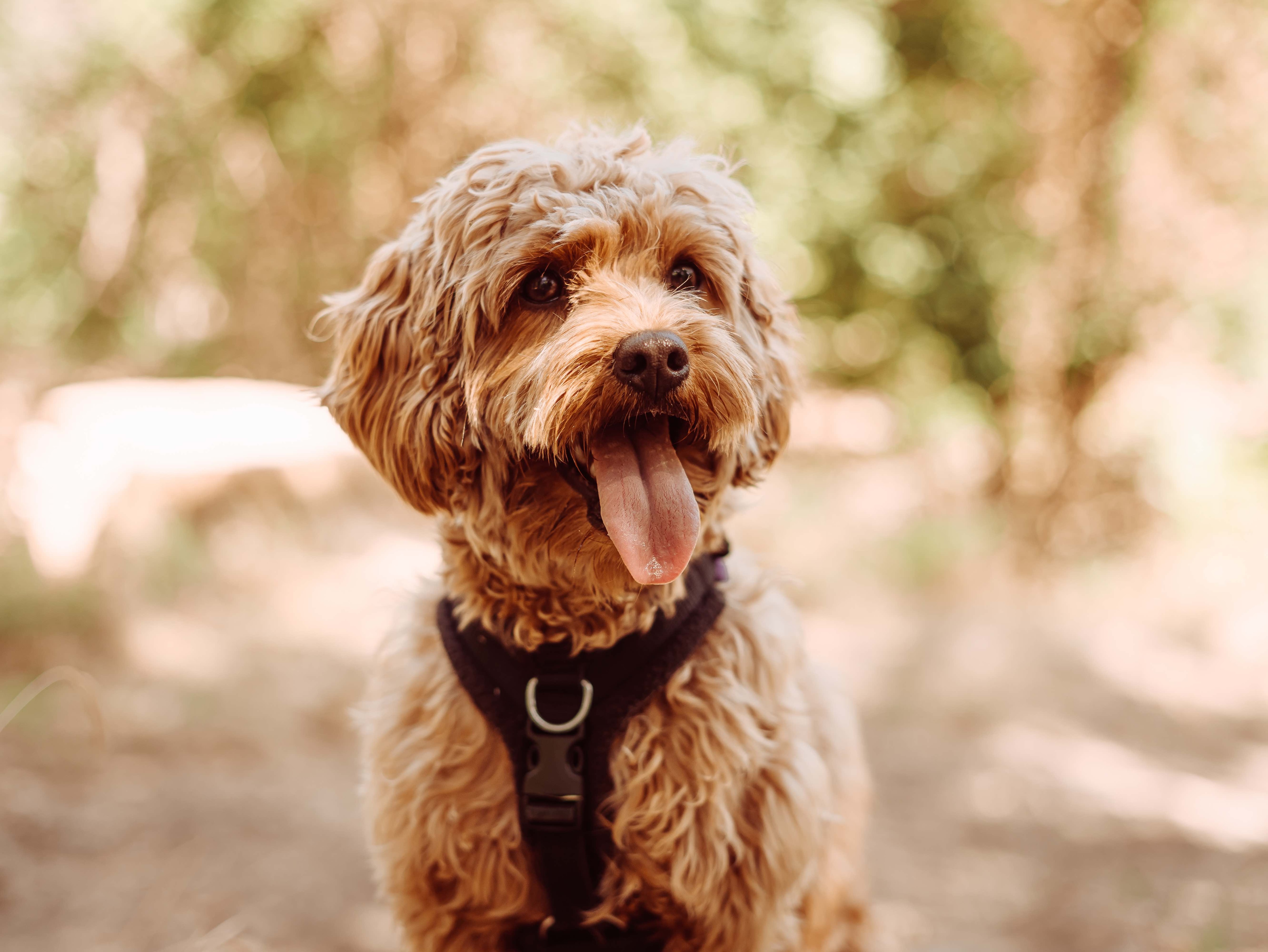
If you have pets or other people at home, your Cavapoo will likely love them all. These happy little dogs are content to always be by your side, whether you’re out running errands or hanging out at home. “This is very, very much a flexible family dog,” Askeland says.
That said, the Cavapoo’s people-centric personality can be a challenge for some pet parents.
“Because they have such a strong attachment to their families, they may be a little more prone to exhibit signs of separation anxiety and get upset when their family leaves them, whether that just means they’re in another room and can’t get to them, or leave the house as a whole,” Askeland says.
Cavapoo Behavior
The potential for separation anxiety—which can lead to undesirable behaviors such as chewing or barking—is the biggest consideration with this breed. To help dogs with separation anxiety, give your Cavapoo a mentally stimulating activity like a KONG®, lick mat, or puzzle toy whenever he’s left alone. Increasing exercise and crate training your Cavapoo puppy can also help your dog with anxiety. Otherwise, Cavapoos tend to be friendly, confident, and eager to please.
Cavapoo Training
With a bright mind and people-pleasing nature, the Cavapoo responds well to positive reinforcement training. Once they’ve mastered the basic cues, Cavapoos can really shine when learning tricks with their people, Askeland says.
“Fun tricks involving them being close to you”—like teaching them to weave between your legs or jump through a hoop—"would be a fun activity and something they would likely thrive in,” she says.
Fun Activities for Cavapoos
-
Learning tricks
-
Therapy dog work
-
Food puzzles
-
Fetch
-
Cuddling at home
Cavapoo Grooming Guide
“Cavapoos have a low-shedding coat that requires regular grooming to prevent matting and tangling,” Kong says. “Regular brushing, bathing, and trimming are all parts of grooming a Cavapoo.”
Additionally, says Kong, “Ear and eye cleaning are also crucial to prevent infections, as well as cleaning their teeth regularly to prevent dental issues.”
Skin Care
Keep an eye on your Cavapoo’s skin for signs of allergies, and talk to your vet right away if you notice redness, dryness, or increased scratching.
Coat Care
Plan on brushing your Cavapoo about three times a week, and book a grooming appointment every six weeks—or learn how to use professional tools to keep that beautiful coat from tangling and causing painful mats.
Eye Care
Cleaning your Cavapoo’s eyes isn’t only important in terms of preventing infection, but it’s also an opportunity to notice changes that could indicate an eye condition.
Ear Care
Clean your Cavapoo’s ears when you groom him, and keep an eye on his ears between cleanings. If he suffers from allergies, his ears could become itchy and infected. You might smell an infection, debris in the ear canal, or notice him shaking his head.
Considerations for Pet Parents
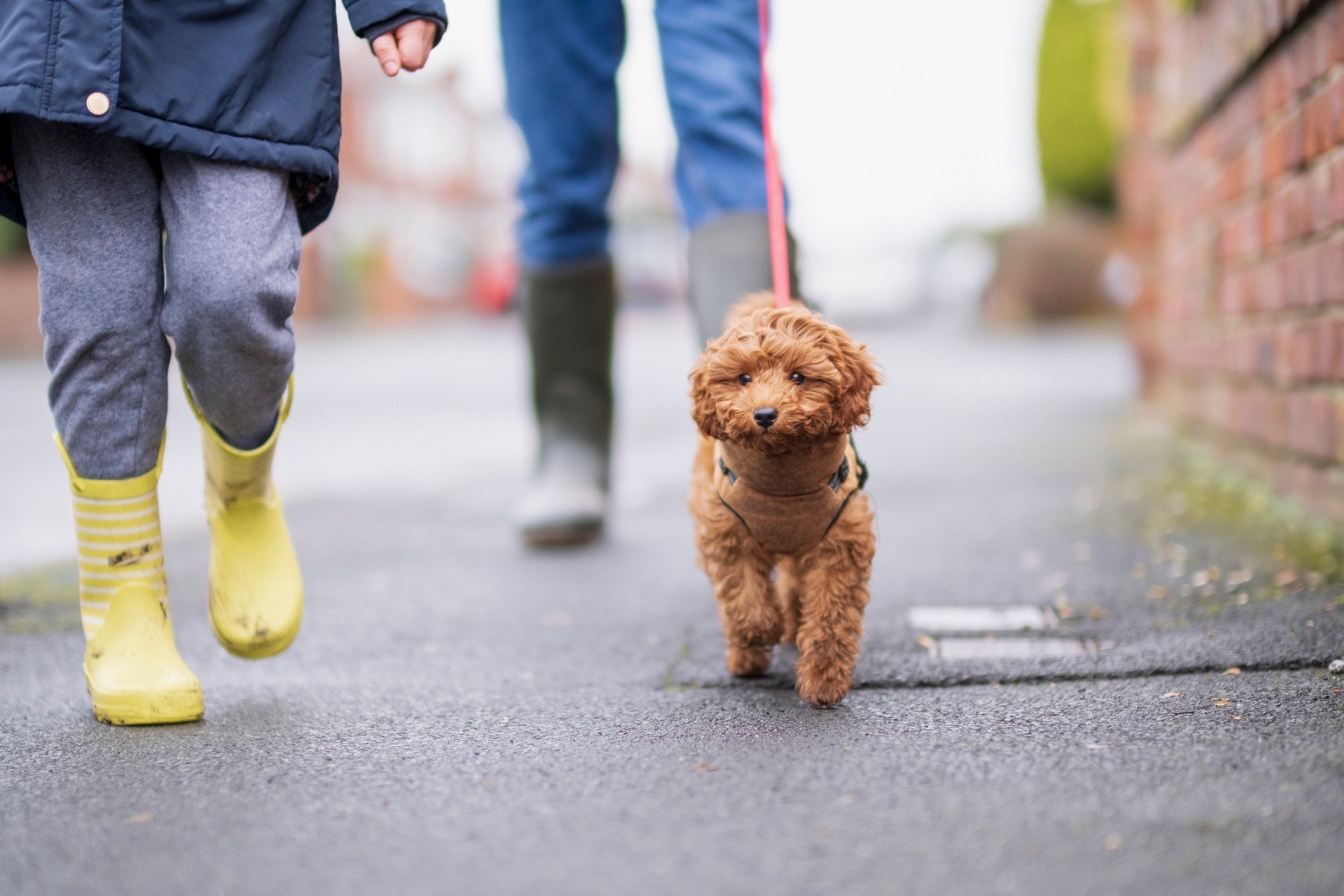
As long as you’re prepared to provide your Cavapoo with lots of love, attention, and grooming, this is an adaptable dog that makes a wonderful addition to all kinds of families. Light to moderate exercise, paired with reward-based training and food puzzles to engage your Cavapoo’s bright mind, will go a long way toward keeping your pup happy in whatever home you have.
Keep in mind, though, that no dog is truly hypoallergenic—Cavapoos included. “While they do have low-shedding coats, some may still produce allergens that can cause reactions in sensitive individuals,” Kong says. “Hybrid dogs can vary in their temperament, appearance, and health depending on the parent breeds. Research and understand the potential traits and health issues associated with both parent breeds before making the final decision on a hybrid dog breed.”
Cavapoo FAQs
How big does a Cavapoo get?
The Cavapoo is a relatively small breed that’s usually 8–25 pounds and 9–14 inches tall. The Poodle side of this mix can be a Miniature Poodle or Toy Poodle, which can affect the size of your full-grown Cavapoo.
Is a Cavapoo hypoallergenic?
While the Cavapoo, like other Poodle mixes, is sometimes referred to as hypoallergenic, no dog is truly allergen-free. Because they’re bred to have low-shedding coats, though, they may be a better option for people with allergies than a breed that sheds heavily.
How long do Cavapoos live?
This little dog has an impressive lifespan that typically ranges 12–15 years.
How much do Cavapoos cost?
As a designer hybrid, the Cavapoo is not a purebred dog recognized by the American Kennel Club, and that can make it easy for disreputable breeders to get into the Cavapoo game. Reputable, professional Cavapoo breeders—who provide health guarantees based on recommended genetic testing—will likely charge $2,000–$4,000 for Cavapoo puppies, but that may fluctuate based on location and other factors.
What is the difference between Cavapoos vs. Cockapoos?
Understanding a Cavapoo vs. a Cockapoo is pretty simple. A Cavapoo is a cross between the Cavalier King Charles Spaniel and Miniature Poodle or Toy Poodle. With a Cockapoo, that CKC Spaniel side is swapped out for a Cocker Spaniel.
Featured image: iStock/EllenMoran
Help us make PetMD better
Was this article helpful?
